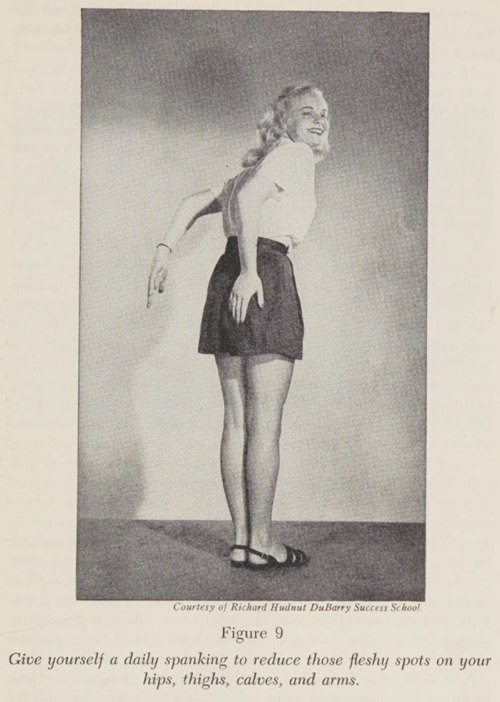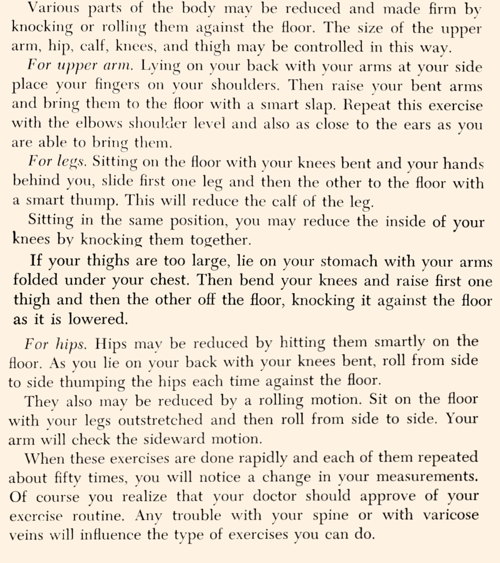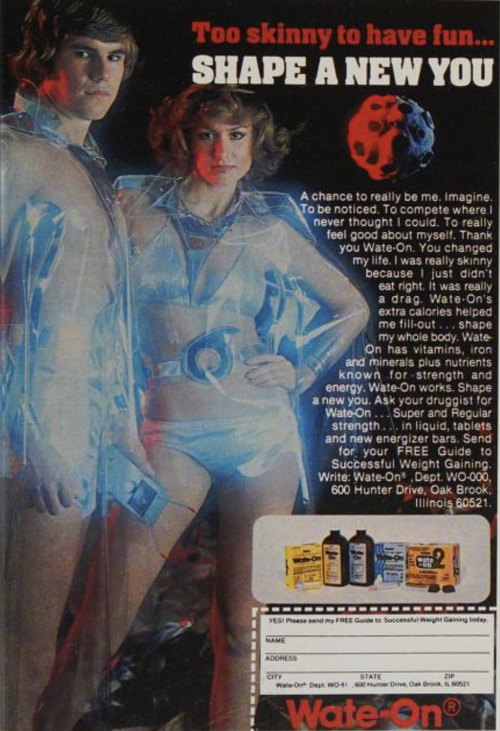Dieting and Weight Loss
Jackson Whitlow, the Mountain Faster
Jackson Whitlow made headlines in 1937 by fasting for 52 days. He did it because he said God had told him to. He broke his fast with elderberry wine and squirrel broth.About a year later God told Whitlow to live in a cave. His condition rapidly deteriorated and by the start of 1939 he was dead. According to Whitlow, this was also "the Lord's will".

Atlanta Journal - Jan 2, 1939
Posted By: Alex - Thu Oct 03, 2024 -
Comments (0)
Category: Religion, 1930s, Dieting and Weight Loss
Teflon as a weight-loss aid
A 2016 article in the Journal of Diabetes Science and Technology ("Polytetrafluoroethylene Ingestion as a Way to Increase Food Volume and Hence Satiety Without Increasing Calorie Content") proposed using Teflon as a weight-loss aid. The idea was to add powdered Teflon to food in order to bulk up the food's volume without adding calories. From the article:Maybe they're right about the harmless effects of ingesting Teflon, but it sure would be an uphill battle to convince the public of this given the widespread concern about ingesting Teflon from scratched pans. The manufacturer of Teflon briefly addresses this concern on the Teflon.com website:
Fact: Particles from Teflon™ nonstick coatings are not harmful, even if ingested.
via New Scientist
Posted By: Alex - Thu Sep 26, 2024 -
Comments (4)
Category: Science, Dieting and Weight Loss
Weight-Loss Earring
The Acu-Ring, or weight-control earring, was introduced in 1978 and continued to be sold until at least 1990.You were supposed to wear the ring around the edge of your ear and squeeze it whenever you felt an urge to eat. Soon you'd see the pounds melting away!
It supposedly worked by means of 'acupressure'. The theory was that there's a spot on the ear that controls the stomach, so putting pressure on that spot would lessen appetite. (Couldn't a similar effect be achieved just by squeezing the edge of your ear with your fingers? Apparently not.)
A similar idea lay behind "staplepuncture" (or ear stapling) which we've posted about previously.

Brigham Young University Daily Universe - Oct 7, 1982


Allentown Morning Call - July 17, 1978
Posted By: Alex - Tue Sep 10, 2024 -
Comments (0)
Category: Dieting and Weight Loss
Politician promises weight loss
A low-ambition campaign promise: Adeline Geo-Karis promised that, if elected Comptroller of Illinois, she would lose 50 pounds. She didn't win.
Bloomington Pantagraph - May 23, 1986
Posted By: Alex - Thu Sep 05, 2024 -
Comments (1)
Category: Politics, 1980s, Dieting and Weight Loss
The Roll-a-Ray Fat Remover
Introduced in 1948, by 1950 the Roll-a-Ray had been banned by the FDA. It was simply two rubber rollers with an electric light bulb mounted behind them.
Detroit Free Press - Nov 21, 1948

FDA Consumer - Feb 1977
Posted By: Alex - Sat Aug 17, 2024 -
Comments (3)
Category: Frauds, Cons and Scams, 1940s, Dieting and Weight Loss
English Chemist’s Secret Formulation
Transform from a "fat & lonely" cartoon into a "slim & desirable" photograph in 3 days.It's got my vote for the best before-and-after figures of any weight-loss ad.

Daily Mirror - Mar 25, 1972
Posted By: Alex - Fri Jul 19, 2024 -
Comments (0)
Category: Advertising, 1970s, Dieting and Weight Loss
Dr. Dante’s Figure Control Record
Just listen to Dr. Dante's exciting voice and lose weight permanently. No exercise! "For Women Only"The album was released in 1972.
Some trivia about it from discogs.org: "this album is clearly visible in the movie Gremlins which came out in 1984. Towards the end of the movie, after they blow up the movie theater, when they’re chasing Stripe through the department store Billy is walking through the electronics department with a bat and this album is highlighted in that scene."
audio via: thecrosspollinator


Posted By: Alex - Tue Mar 19, 2024 -
Comments (2)
Category: Vinyl Albums and Other Media Recordings, 1970s, Dieting and Weight Loss
Gladys Sellew’s 15-cents-a-day diet
Back in the 1930s, sociologist Gladys Sellew decided to find out if it was possible to survive spending only 15 cents a day on food. I think, in today's money, that would be about $3/day.She used herself as a test subject and, five years later, reported that not only was it possible, but she actually only spent an average of 13 cents a day on food.
She said she was going to remain on her frugal diet for the rest of her life.

Austin American Statesman - June 3, 1942
The headline below claimed that she gained weight on her diet, but in the picture above it sure doesn't look like she had any extra weight on her.

Hartford Courant - Feb 24, 1941
A typical day's meal plan:

Austin American Statesman - June 3, 1942
By way of comparison, here's a more recent version of an experiment in frugality: "Spending $5 a day on food. Is it possible?"
Posted By: Alex - Mon Dec 04, 2023 -
Comments (0)
Category: Food, 1940s, Dieting and Weight Loss
Spank yourself slim
Slimming advice from Mildred Graves Ryan, author of Clothes For You (1954).

via Oddball Emporium
Posted By: Alex - Tue Oct 10, 2023 -
Comments (0)
Category: Exercise and Fitness, 1950s, Dieting and Weight Loss
Wate-On
Based on the strange clothing and the thing that looks like an asteroid in the top right corner, I think the two people are supposed to be futuristic space travelers of some kind. Why they're in an ad for a weight-gain product, I don't know.
Sports Illustrated - June 5, 1978
Posted By: Alex - Sun Sep 17, 2023 -
Comments (2)
Category: Advertising, Space Travel, 1970s, Dieting and Weight Loss

| Who We Are |
|---|
| Alex Boese Alex is the creator and curator of the Museum of Hoaxes. He's also the author of various weird, non-fiction, science-themed books such as Elephants on Acid and Psychedelic Apes. Paul Di Filippo Paul has been paid to put weird ideas into fictional form for over thirty years, in his career as a noted science fiction writer. He has recently begun blogging on many curious topics with three fellow writers at The Inferior 4+1. Contact Us |




